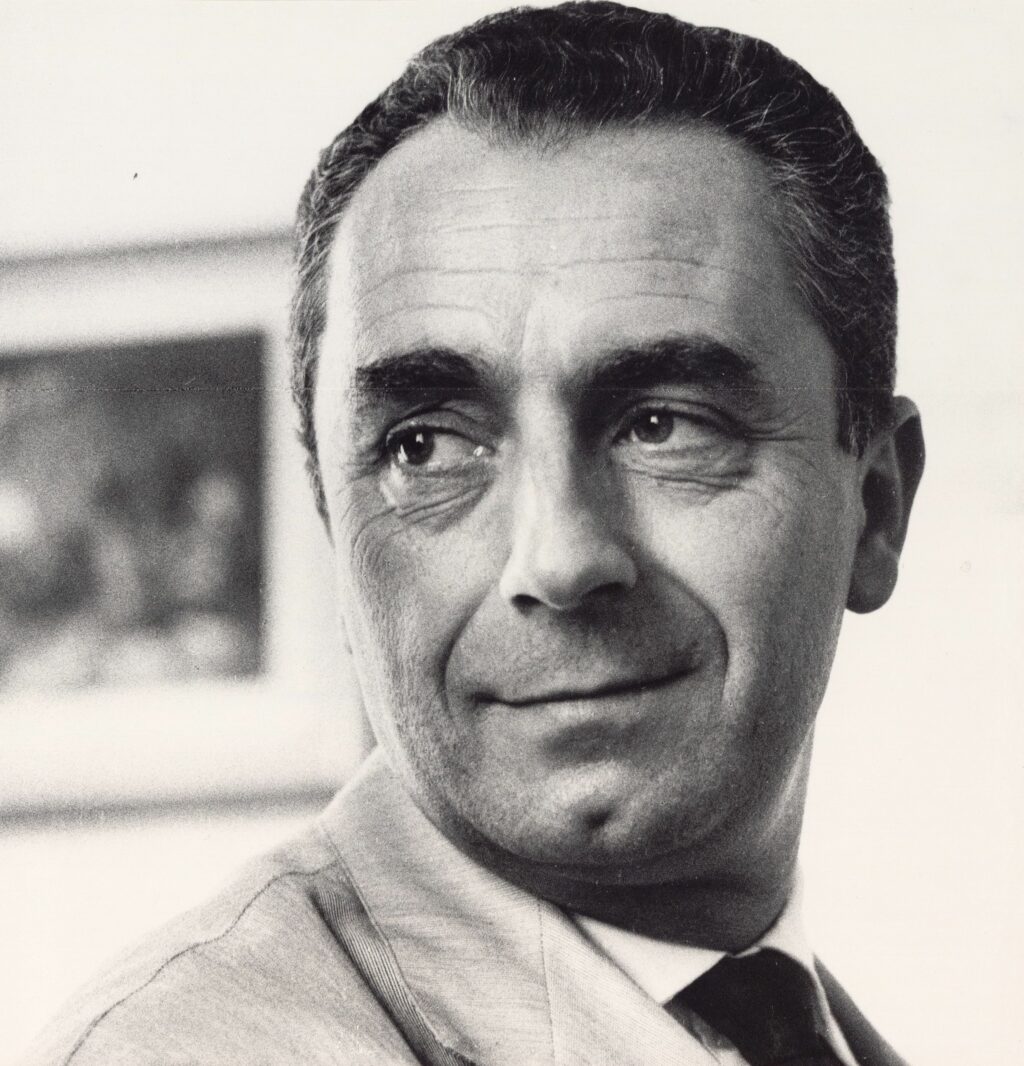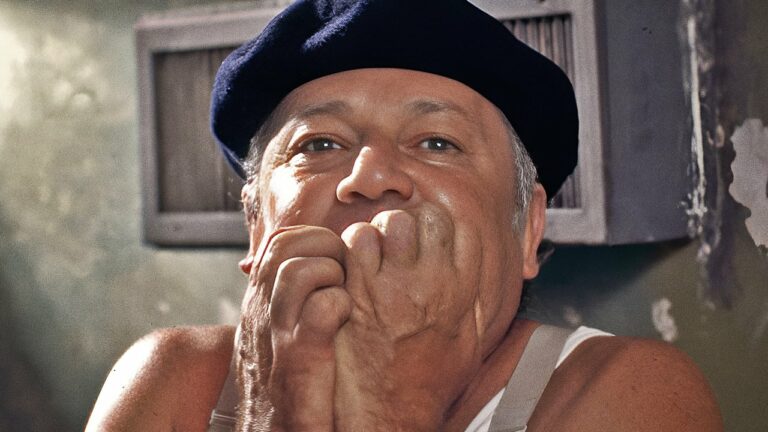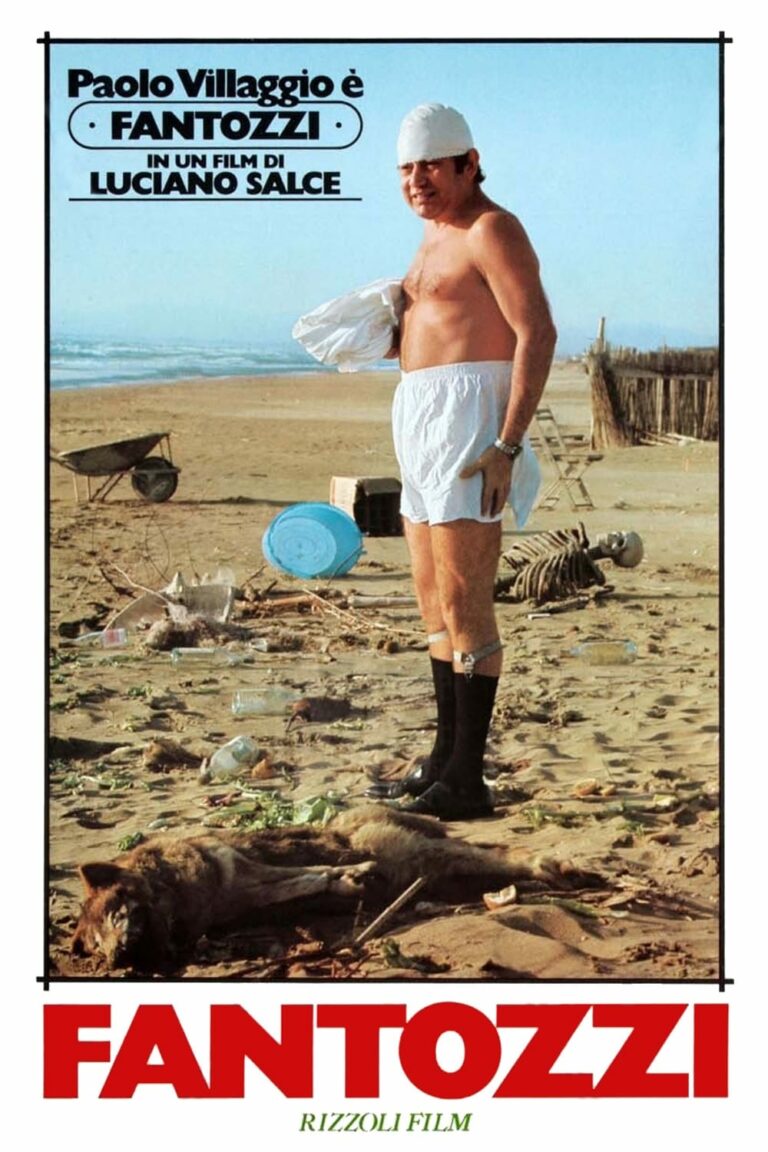
Michelangelo Antonioni (1912–2007) was a trailblazing Italian filmmaker, screenwriter, and painter whose films redefined the language of cinema. Known for his meticulous visual style and existential themes, Antonioni challenged traditional storytelling by exploring alienation, ennui, and the complexities of modern life.
From the groundbreaking L’Avventura (1960) to the enigmatic Blow-Up (1966), Antonioni’s work delved into the depths of human emotion and the disconnect of contemporary society. His films remain celebrated for their aesthetic brilliance, narrative ambiguity, and profound philosophical undercurrents, earning him a place among the most influential directors in cinematic history.
Early Life and Education
Michelangelo Antonioni was born on September 29, 1912, in Ferrara, Italy, to a middle-class family. As a child, Antonioni displayed an early interest in the arts, particularly painting and architecture, which would later influence his visual approach to filmmaking.
He studied economics at the University of Bologna but remained deeply engaged in artistic pursuits. During his university years, he also wrote film reviews for local newspapers, developing a passion for cinema and an appreciation for its potential as an art form.
In 1940, Antonioni moved to Rome to study at the Centro Sperimentale di Cinematografia, Italy’s national film school. Although his time there was brief, it marked the beginning of his journey into the world of filmmaking.
Early Career: Collaborations and Short Films
Antonioni’s early career saw him working as a screenwriter and assistant director, collaborating with notable filmmakers like Roberto Rossellini and Marcel Carné. These experiences provided him with valuable insights into the craft of filmmaking.
In the late 1940s, Antonioni began directing short documentaries, such as Gente del Po (1947), which captured the lives of workers along the Po River. These early works showcased his observational style and interest in the struggles of ordinary people, laying the foundation for his later films.
Breakthrough with L’Avventura
Antonioni’s first major breakthrough came with L’Avventura (1960), a film that redefined cinematic storytelling. The film follows a group of wealthy Italians searching for a missing woman on a remote island, only to reveal their own emotional detachment and existential crises.
Characterized by its slow pacing, minimalist dialogue, and stunning visuals, L’Avventura was initially met with controversy at the Cannes Film Festival but soon garnered critical acclaim, winning the Jury Prize. The film marked a turning point in Antonioni’s career, establishing him as a pioneer of modernist cinema.
The “Alienation Trilogy”
Following L’Avventura, Antonioni directed two more films that, together with the first, are often referred to as the “Alienation Trilogy.” These films delve into themes of disconnection, identity, and existential malaise.
- La Notte (1961): Starring Marcello Mastroianni and Jeanne Moreau, this film explores the disintegration of a marriage set against the backdrop of modern Milan.
- L’Eclisse (1962): Featuring Monica Vitti and Alain Delon, this film examines the fleeting and hollow nature of modern relationships, using Rome’s architecture to emphasize emotional isolation.
The trilogy’s stark visuals and introspective themes solidified Antonioni’s reputation as a filmmaker who could capture the existential anxieties of contemporary life.
International Success with Blow-Up
In 1966, Antonioni gained international acclaim with Blow-Up, his first English-language film. Set in Swinging London, the film follows a photographer (David Hemmings) who believes he has accidentally captured a murder on film.
Blow-Up was a critical and commercial success, earning the Palme d’Or at the Cannes Film Festival and becoming a cultural touchstone of the 1960s. Its exploration of perception, reality, and artistic responsibility resonated with audiences worldwide, further cementing Antonioni’s legacy.
Other Notable Films
Antonioni’s later works continued to push the boundaries of cinematic storytelling, exploring global themes and utilizing innovative techniques.
- Zabriskie Point (1970): A visually stunning exploration of counterculture and consumerism in the United States.
- The Passenger (1975): Starring Jack Nicholson, this existential thriller examines identity and freedom through the lens of a journalist’s journey in North Africa.
Although these films were not always commercially successful, they showcased Antonioni’s commitment to artistic experimentation and his unyielding vision.
Themes and Style
Antonioni’s films are renowned for their focus on mood, atmosphere, and visual composition rather than conventional plot structures. His use of long takes, minimal dialogue, and evocative landscapes creates a sense of introspection and ambiguity, inviting viewers to interpret the meaning of his work.
Key themes in Antonioni’s films include:
- Alienation: Characters often struggle with emotional and societal disconnection.
- Modernity: His films critique the rapid industrialization and materialism of the 20th century.
- Ambiguity: Antonioni embraced open-ended narratives, encouraging audiences to engage intellectually with his work.
Recognition and Awards
Antonioni’s contributions to cinema earned him numerous accolades throughout his career, including:
- Palme d’Or for Blow-Up (1967)
- Silver Bear for Best Director for La Notte (1961)
- Academy Award nomination for Best Director for Blow-Up (1967)
- Honorary Academy Award (1995) for his lifetime achievements
In addition to his awards, Antonioni’s influence can be seen in the works of filmmakers like Stanley Kubrick, Wong Kar-wai, and Christopher Nolan.
Later Life and Legacy
In 1985, Antonioni suffered a debilitating stroke that left him partially paralyzed and unable to speak. Despite this, he continued to create, directing Beyond the Clouds (1995) with the assistance of Wim Wenders and releasing Eros (2004), a collaboration with Steven Soderbergh and Wong Kar-wai.
Michelangelo Antonioni passed away on July 30, 2007, at the age of 94. His death marked the end of an era, but his films continue to inspire filmmakers and audiences worldwide.
FAQs
What is Michelangelo Antonioni best known for?
Antonioni is best known for his modernist films that explore themes of alienation, identity, and existentialism, such as L’Avventura and Blow-Up.
What are Antonioni’s most famous films?
His most famous works include L’Avventura, La Notte, L’Eclisse, Blow-Up, and The Passenger.
What awards did Antonioni win?
Antonioni won numerous awards, including the Palme d’Or, Silver Bear, and an Honorary Academy Award for his contributions to cinema.
How did Antonioni influence cinema?
Antonioni’s focus on mood, visual storytelling, and existential themes redefined cinematic language, influencing filmmakers worldwide.
What themes are common in Antonioni’s films?
Common themes include alienation, the impact of modernity, and the ambiguity of human relationships.
Conclusion
Michelangelo Antonioni’s legacy as a cinematic pioneer is undeniable. Through his visually stunning and intellectually challenging films, he redefined storytelling and offered audiences a profound exploration of the human condition.
With a body of work that continues to captivate and inspire, Antonioni remains a towering figure in the history of cinema, a director whose vision transcends time and continues to resonate with each new generation of filmmakers and cinephiles.



